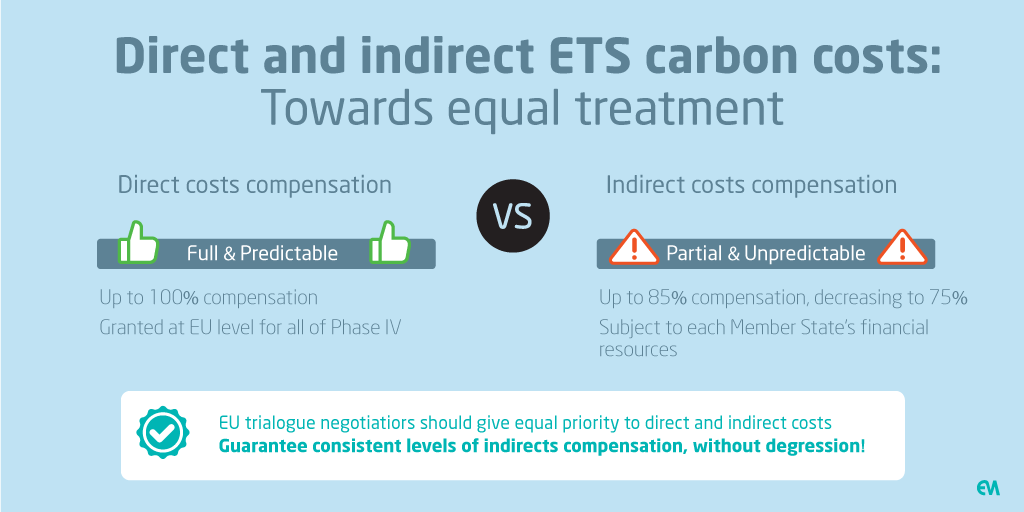Go forwards, not backwards while negotiating the Emissions Trading System (ETS) and take steps to improve compensation for industries impacted by indirect carbon costs. That’s our message as final negotiations start between the European Parliament, Commission and Council.
Why direct and indirect costs?
ETS impacts two interconnected types of energy-intensive industry, carbon-intensive industries that must buy ETS allowances – a direct cost, and electricity-intensive ones that mainly face higher electricity prices – an indirect cost.
Post 2020 - when allowances are withdrawn in a bid to encourage fuel switching and incentivise investments in low-carbon technologies - these costs are set to rise sharply.
Without equal protection from both direct and indirect costs, EU regulators are undermining Europe’s industrial strength and potential.
Indirect costs - missing the mark
Policymakers have recognised the danger to industry and already grant full compensation of direct costs to the best-performing installations. Everyone agrees that this system should continue up to 2030.
But what about the indirect costs, which can be up to twenty times higher than direct costs in the non-ferrous metals sector?
So far, policymakers have been unable to establish a comparable system. The risk is high that compensation for indirect costs will continue as voluntary and partial.
We commend MEPs and EU Member States for proposing bright ideas to move forward, including a central compensation fund and extra transparency requirements. But other new elements will significantly worsen the existing system unless the right compromise is found.
Of most concern is the European Parliament call for maximum compensation levels for indirect costs to decline year-on-year. This would make it even harder for best-performing installations to stay globally competitive, especially when experts are predicting a carbon price over €30 a tonne under the reformed ETS.
At this level, European aluminium producers would face indirect costs totalling 25 per cent of the global price required to sell their product. This all but guarantees carbon leakage to countries with less environmental regulation, and a more polluting energy mix.
Our Call

We call on ETS negotiators to improve rather than weaken the system for compensating indirect costs, by pushing forward the best possible combination of new proposals.
Our main plea is that negotiators avoid punitive actions against sectors facing indirect costs. Declining aid-levels would put the non-ferrous metals industry and others in a critical position, without gain for Europe.
Despite claims to the contrary, degressive compensation is not effective for encouraging producers to shift to a cleaner energy mix. European installations cannot influence their power mix, and face indirect costs even in countries like Norway where electricity is almost 100 per cent renewable. Reducing our financial margins would not change that situation.
The Emissions Trading System is inspired by an audacious vision for tackling climate change in Europe, and its one our industry fully supports. The challenge is to turn this vision into a practical reality that works for business too. We want to be your partners, and we’re ready to move forward.